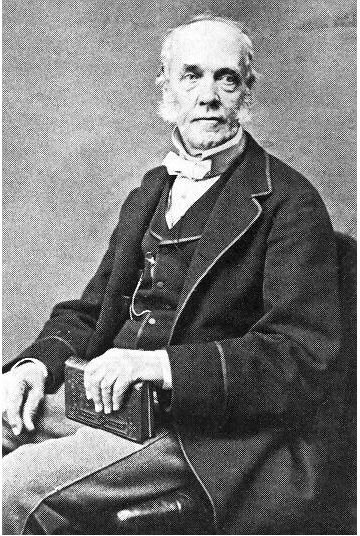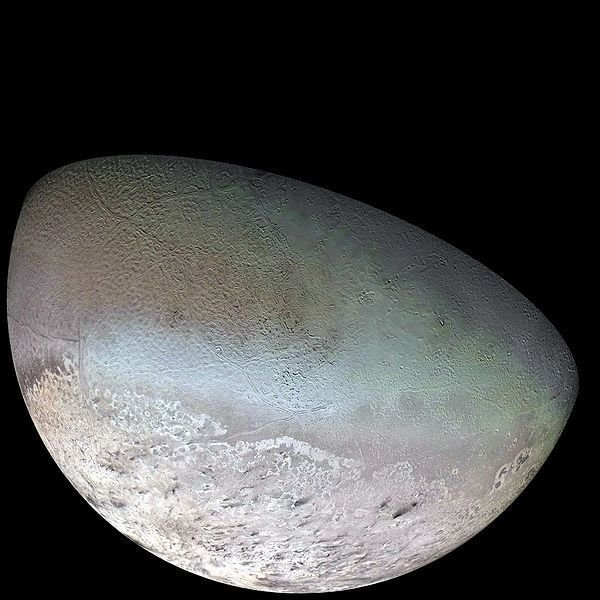Who Discovered Triton the Largest Moon of Neptune? Interesting Facts About Neptune’s Moon Triton
Neptune–Born in Controversy
Aptly named after the Roman god of the sea, the enchanting blue-hued planet is the fourth largest in our solar system. Neptune was first observed by Galileo Galilee on December 28, 1612, but it was thought to be a fixed star. During 1821-46, two brilliant minds—Urbain Le Verrier and John Couch Adams—began their quest to search for Neptune and conducted independent mathematical calculations to locate this planet.
Much controversy occurred between the supporters the French mathematician and British astronomer and mathematician over the initial accurate discovery of the planet Neptune. However, the controversy ceased as both Adams and Le Verrier were together declared discoverers. Besides controversies, Neptune is also known for its moons—13 of them. Of the 13 moons, the largest moon is Triton, which is best known for its retrograde orbit. But, who discovered Triton the largest moon of Neptune? Was there another controversy on this discovery? Let’s see.
Who Discovered Triton?

A month after Neptune was discovered by German astronomers Johann Gottfried Galle and Heinrich Louis d’Arrest, Neptune’s moon Triton (pronounced Try-tun), caught the eye of British astronomer William Lassell on October 10, 1846.
By profession, Lassell was an expert brewer but also had a deep interest in astronomy. He began constructing his own telescope in 1820. After the discovery of Neptune, Lassell received a letter from John Herschel suggesting a search for Neptune’s moons. Neptune was discovered by German astronomers on September 23, 1846 and within 17 days, Lassell discovered Triton, Neptune’s largest moon.
Neptune’s moon Triton is named after Poseidon’s son—the Greek equivalent of the Roman God Neptune. Almost all discovered moons of Neptune are named after the characters from Greek and Roman mythology. The name “Triton” was first proposed in 1880 by French astronomer and author Nicolas Camille Flammarion in his book Astronomie Populaire. However, the name was not adopted for several decades. Quite interestingly, Triton was simply known as the “satellite of Neptune” until 1949, when the second moon Nereid was discovered by Gerard P. Kuiper.
In a nutshell, it was the British astronomer William Lassell who discovered Triton the largest moon of Neptune in 1846 and the name “Triton” was first suggested by French astronomer Nicolas Flammarion in 1880.
Interesting Facts About Triton
-
Triton is the only largest moon that orbits in the direction opposite to the movement of the planet. This phenomenon is called retrograde orbit.

-
The physical characteristics of Triton are very similar to Pluto. For that reason scientists presume that Triton was also a Kuiper Belt Object, which was captured by Neptune’s gravity a million years ago.
-
The main gases that compose Triton’s thin atmosphere include nitrogen and methane. Also, Triton is one of the most volcanically active bodies in our solar system.
-
Neptune’s moon Triton is also one of the coolest entities in the solar system.
-
NASA’s Voyager 2 was the first spacecraft to observe Triton and Neptune. It began analyzing the moon during its 1989 flyby. Voyager 2 found the surface temperature of Triton to be -391 degree Fahrenheit. It observed that Triton is one of the few moons in the solar system to have active geysers.
References
“Triton Information and Facts” https://solarsystem.nasa.gov/planets/profile.cfm?Object=Triton
Neptune’s Moon Triton https://www.solarviews.com/eng/triton.htm
“Triton” Wikipedia
Image Credits:
1. Triton Mosaic Image: https://photojournal.jpl.nasa.gov/catalog/PIA00317
2. Photograph of William Lassell: https://www.klima-luft.de/steinicke/ngcic/persons/lassell.htm
3. Color Image of Neptune’s Moon Triton: https://en.wikipedia.org/wiki/File:Triton_%28moon%29.jpg
